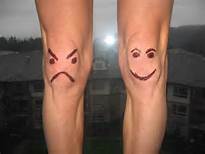How Weather Changes Affect Joint Pain
By Ian Campbell, DPT
 Does a change in weather mean a change in your pain?
Does a change in weather mean a change in your pain?
For those of us who grew up in southwest Idaho, we understand the weather here can change drastically. For those living with long-standing joint pain due to arthritis, the change in weather can mean a change in their pain. In most healthcare offices, it’s not out of the norm to hear people report feeling stiff and sore in their joints when the weather changes. Though, why does this happen? Does a change in weather truly mean a change in pain? How could a drop in temperature make my knee hurt more? Is there any scientific truth to this? Or is it more myth than fact.
In the past, there has been a tenuous relationship between changes in weather and direct influence on arthritic joint pain. The studies that claimed there is in fact a relationship were of poor quality, and made hefty claims without good study methodology. In recent years, there has been additional research performed to try and answer these questions. A study1 performed by Tufts University in 2007 found there to be a modest relationship between change in barometric pressure, a reduction in temperature and an increase in pain. In order words, when air pressure increases as the seasonal temperature cools, arthritic joints can become more painful. The authors theorize that when barometric pressure changes in the atmosphere, the fluid within your joints, or synovial fluid, is subjected to higher pressures. One primary purpose of having fluid in your joints is to create stability. Joint stability is important so can you can feel confident using that part of your body during daily activities. Increased fluid pressure in your joints can contribute to feelings of instability, or not trusting your knee to support you as you walk and climb stairs, for example. Feelings of joint instability can cause pain, and often times limits our daily movement.
So when the air temperature drops and your joints feel more achy, that means you should stop moving, right? Wrong! Research has shown us the value of exercise and activity for arthritic joint pain. So, even when the temperature drops, it’s important to keep moving! Your physical therapist is the expert in human movement and activity. Ask them about ways to keep moving and be active, even when your joints hurt as the weather changes this fall and winter.
Ian M. Campbell PT, DPT
Changes in Barometric Pressure and Ambient Temperature Influence Osteoarthritis Pain McAlindon, Tim et al The American Journal of Medicine , Volume 120 , Issue 5 , 429 – 434
https://intermountainpt.com/how-weather-changes-affect-joint-pain/





